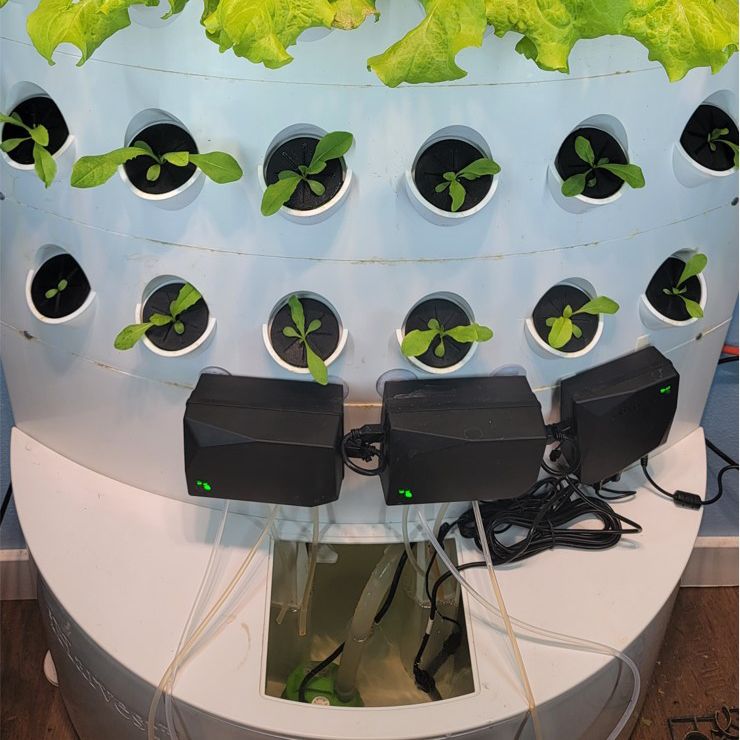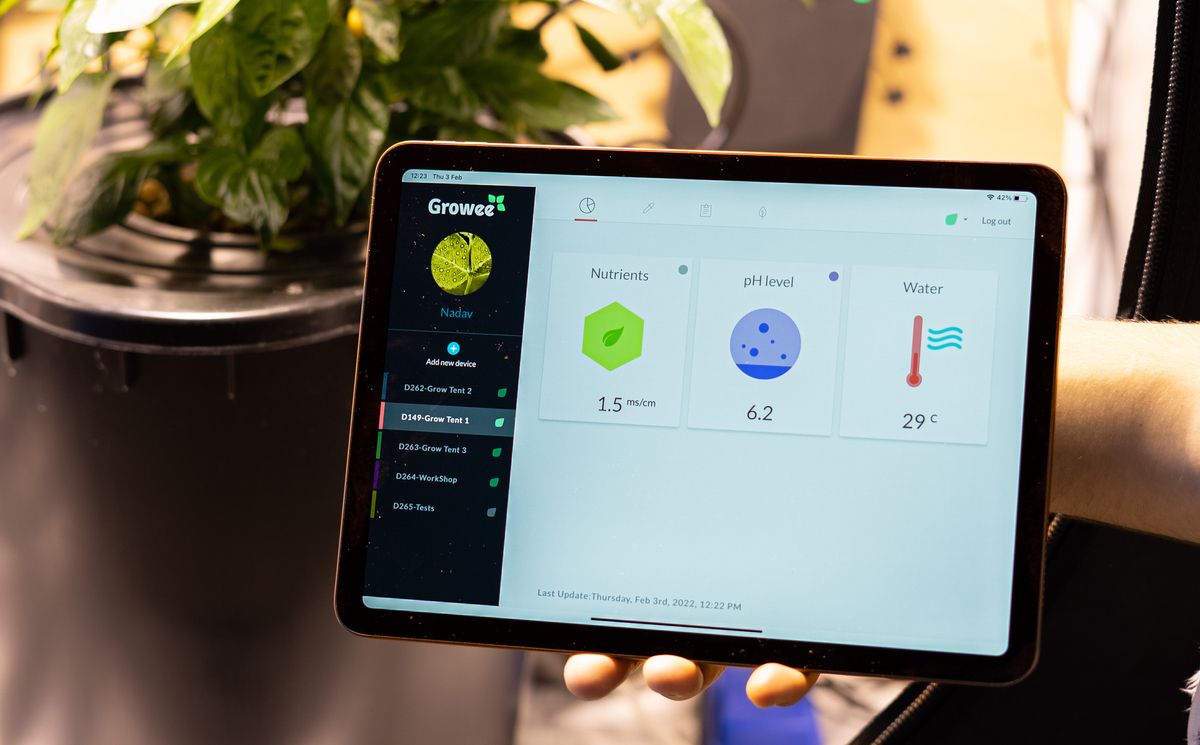Aeroponics is a method of growing plants roots in an air or mist environment without the use of soil. This innovative approach to agriculture can lead to faster growth, higher yields, and greater control over the growing environment. In this article, we will explore everything you need to know about aeroponics, including how it works, the different types of systems available, and the importance of pH balance in aeroponics systems.
What is Aeroponics?
Aeroponics is a method of growing plants roots in an air or mist environment without the use of soil. In this system, plant roots are suspended in the air and periodically misted with nutrient-rich solutions. This approach allows for faster growth, higher yields, and greater control over the root growing environment.
Pathogens may have a much harder time to do any damage due to high amounts of oxygen both in the solution and around the roots thus protecting the plant.
See How Growee Can Save You Time By Automating Your Plants Feeding
Water pH – Automated pH Up and Down Control
Nutrients Mixing – Automated Nutrient Dosing with Target EC / PPM Control.
Control From Anywhere – WiFi Connection and mobile App
How Does Aeroponics Work?
Aeroponics systems work by suspending plant roots in the air and periodically misting them with a nutrient-rich solution. The misting is done using a high-pressure pump and nozzle, which creates a fine mist that is directed towards the roots creating a cloud of oxygen rich nutrient solution. This misting schedule can be adjusted to provide the optimal amount of nutrients ,moisture and oxygen for the plants.

Common Types of Aeroponics
There are two main types of aeroponics systems:
- low-pressure
- high-pressure.
Low-pressure systems use a lower pressure pump to create a mist that is finer than in high-pressure systems.
High-pressure systems use a higher pressure pump to create a fine mist that is directed towards the roots.
Aeroponics vs Hydroponics
Aeroponics and hydroponics are similar in that both systems use nutrient solutions to provide plants with the nutrients they need to grow, and both will have a reservoir.
However, hydroponics systems use a growing medium, such as gravel or rockwool, to hold the plants in place, while aeroponics systems suspend the plants in the air. Aeroponics systems have the advantage of using less water and providing better access to oxygen for the roots, which can lead to faster growth , extremely healthy roots and ultimately higher yields
The Importance of pH Balance in Aeroponics Systems
Aeroponics systems rely on a precise balance of pH to ensure that plants receive the correct amount of nutrients. The pH level of the nutrient solution should be between 5.5 and 6.5 for optimal plant growth. If the pH level is too high or too low, plants may not be able to absorb the necessary nutrients, which can lead to poor growth or even plant wilt and finally death.
It’s important to regularly check and adjust the pH level of the nutrient solution to ensure that plants are receiving the nutrients they need. If the PH is out of the correct parameters , even though there may be the correct nutes they are “locked out” and inaccessible.

How to automatically balance pH in an Aeroponics systems?
In addition to the benefits of aeroponics systems, there is also the option to automate the system with the help of Growee smart hydroponics controllers. Growee’s controllers are designed to monitor and control various aspects of the feeding solution,such as Temperature pH, EC levels. This automation allows for a more hands-off approach and provides greater control over the growing environment. With the help of Growee’s controllers, growers can ensure optimal conditions for their plants at all times, leading to faster growth, higher yields, and a greater success rate. By combining the benefits of aeroponics with the convenience and precision of hydroponics automation, growers can take their gardening to the next level.
Final words
In conclusion, Aeroponics is an innovative ,and advanced method of growing plants in an airy or mist environment without the use of soil. It has many benefits over traditional soil-based agriculture, including faster growth, higher yields, and greater control over the growing environment. By understanding the principles of aeroponics and how to maintain the proper pH balance, growers can achieve the best results from this unique and powerful technology.
FAQ
Do plants grow faster in aeroponics?
Plants can grow faster in aeroponics systems because they have access to a constant supply of oxygen and nutrients. The misting schedule can also be adjusted to provide the optimal balance of moisture and oxygen for the plants. This can lead to faster growth and higher yields compared to traditional soil-based agriculture.
Do aeroponics need fertilizer?
Aeroponics systems rely on a nutrient-rich solution to provide plants with the necessary nutrients to grow. This solution is often referred to as fertilizer and is necessary for the proper growth of plants in an aeroponics system.
How often do you water aeroponics?
The frequency of watering in aeroponics systems depends on the specific system and the plants being grown. Typically, the roots are misted with a nutrient solution on a regular schedule, such as every 15 minutes. However, this schedule should be adjusted to provide the optimal amount of moisture for the plants and take into account the season and plant growing stage ,and so can differ greatly.
What plants can be grown in aeroponics?
A wide variety of plants can be grown in aeroponics systems, including vegetables, fruits, herbs, and flowers. Aeroponics systems are particularly well-suited for plants that require a lot of oxygen, such as tomatoes, peppers, and cucumbers.
How do I make aeroponics at home?
Building an aeroponics system at home can be relatively simple, with many tutorials and plans available online. It typically involves suspending the plants in the air, creating a misting system with a pump and nozzle, and maintaining the proper pH balance in the nutrient solution.
What happens during a power outage while using aeroponics?
During a power outage, the aeroponics system will stop misting the plants with nutrient solution, which can cause the plants roots to dry out. If the power outage is short, the plants may recover once power is restored. However, if the power outage is prolonged, the plants may die. It is advisable to have a backup power supply or a generator to avoid this kind of situation.



